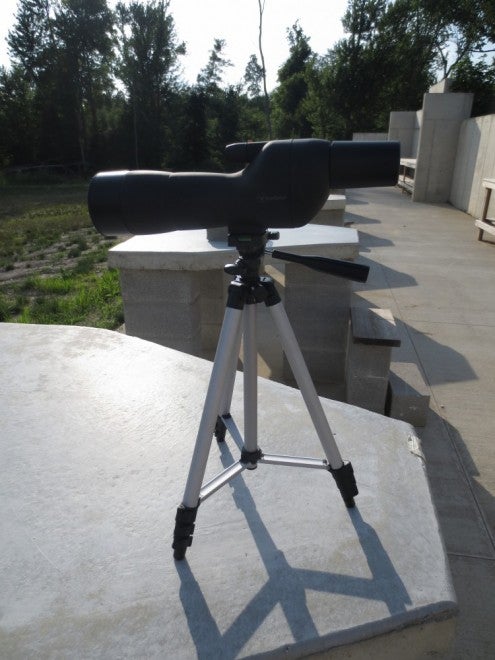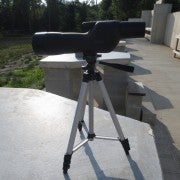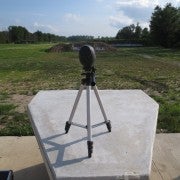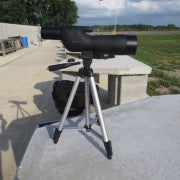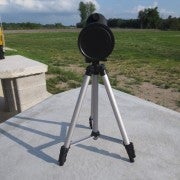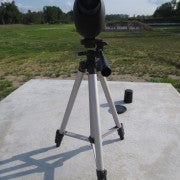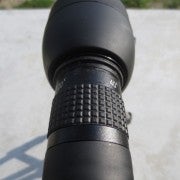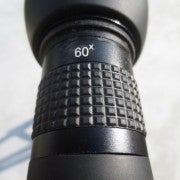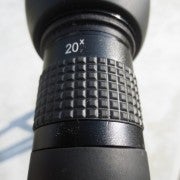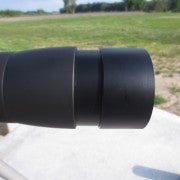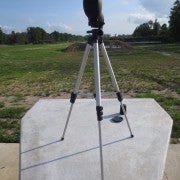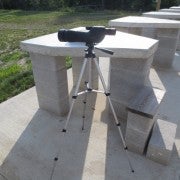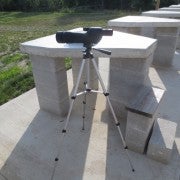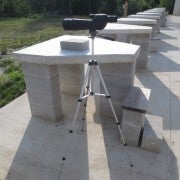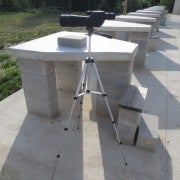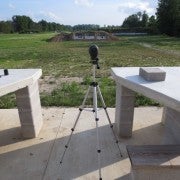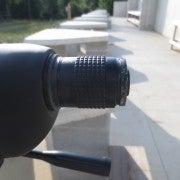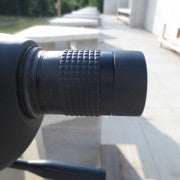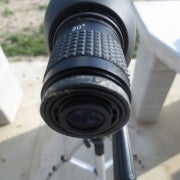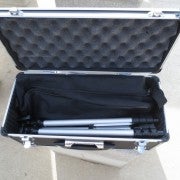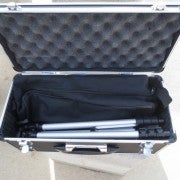I used to be a “cheap” shooter, notorious for buying items at the low end of the market. I lept at opportunities for less expensive accessories. Low-end knock-off sights, grips and lasers furnished my rifles. Fortunately for me, I have been cured of the desire for cheap items, but still retain my miserliness at paying for the good stuff.
Why?
I bought a FireField spotting scope and now have to live with it.
Author’s Note- The spotting scope used for testing was personally purchased for use during my normal rifle testing. It was not furnished by Firefield or any other retailer. I still have the spotting scope and am using it each time I am at the rifle range.
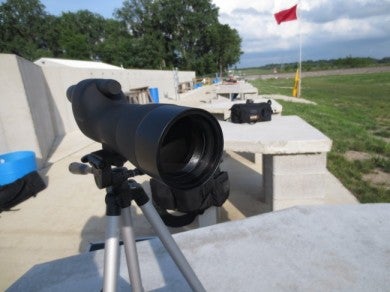
Now spending significant amounts of time at the range for Testing and Evaluation of rifles, I found myself needing a spotting scope to speed up zeroing and accuracy testing. When I first started with TFB, I was shooting strings on splatter targets and using an ACOG to see the pattern. It was a less than ideal (and expensive!) solution.
Not being a serious long-range shooter, I immediately went to Amazon and found the best-rated low-cost spotting scope. With 83 reviews and 4.5 starts, I thought I was safe with a good deal. It had all the specs I thought I was looking for. Large objective lens? Check. Water/fogproof? Check. Adjustable tripod? Check.

The scope arrived quickly without issue and within the day I was out at the range working on a review. The Firefield comes in a hard sided case enclosing the scope and the tripod. The scope itself is further enclosed in a zipped nylon bag with caps covering both the lens and eyepiece. But, everything feels “Cheap.” The hard sized case is cardboard hidden behind plastic panels. The tripod is shaky, and the threads on the eyepiece cap were already cross-threaded.
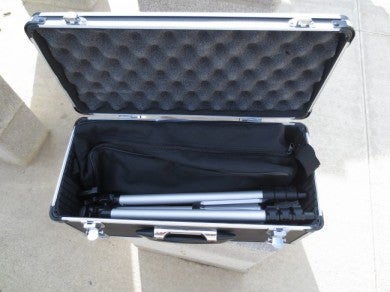
Set up, I immediately noticed two major detractions. The tripod is not stable–at all. At low magnification, its easy to look past the shutter, but at high magnification, it is nigh unviewable. The only way it was usable was to adjust the tripod with no extension. Second, and the largest complaint, is that the eye relief is terrible.
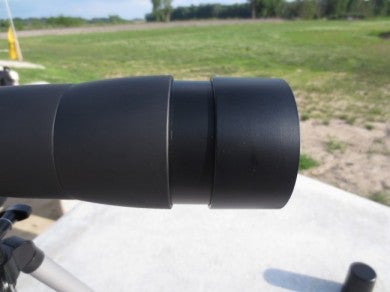
The built-in sunshade. Its not needed, as the glass is not too bright on a sunny day.
Knowing that this spotting scope was going to be used at a range and that most ranges require eye protection, the designers should have extended the eye relief. At 20x magnification, the scope requires one to press eye protection against it hard. At 40x, you remove the rubber eyepiece cover, and at 60x the shooter has to remove the eye protection all together!
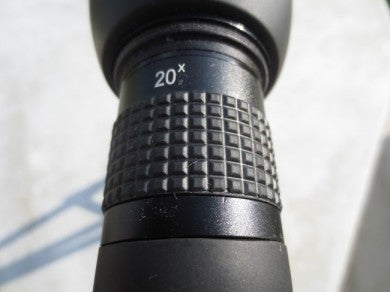
Magnification is adjusted at the eyepiece, twisting counter-clockwise to increase up to 60x.
Still, it does its job. Removing the rubber eyepiece cap, I can see impacts at 100 yards on non-splatter targets. At 40x magnification, I can see out to 200 yards and at the full 60x on a sunny day, I can see shots at 300. Since I shoot mostly at 100 for accuracy testing, 40x is good enough. The Firefield scope works, you just have to work around it.
The Good:
- On a sunny day (when I do most of my shooting), its a good enough image to see .223 holes in 8.5 x 11″ targets. at 100 yards (so long as you do not breathe on the tripod).
- Focus works, but is very sensitive.
- Comes with tripod and hard carrying case.
The Notable:
- The tripod is an awkward height. Putting it on the ground, it only reaches about 5′. I typically put the tripod on the shooting bench next to the testing rifle.
- The spotting scope is a straight eyepiece. Now experienced, I would enjoy an offset viewer more.
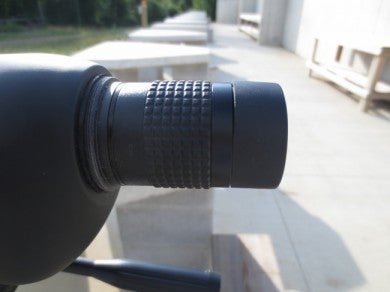
The stock rubber eyepiece.
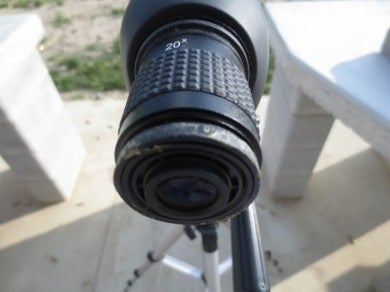
When you remove the eyepiece, the glue residue is obvious, but its the only way to make the scope functional.
The Bad:
- Miserable eye relief. At low magnification, you have to remove the rubber eye ring when using eye pro. At high magnification, you cannot even wear glasses.
- The tripod is cheap. It wobbles with the slightest touch.
- It is usable, but not high-quality glass, despite the claims.Image is bright, but not perfectly crisp (possibly due to very sensitive focus).
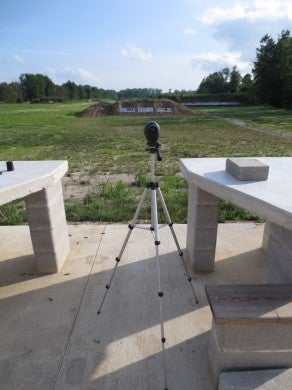
The Firefield spotting scope at its highest point. For someone 6′, its way too short.
Final Thoughts:
In retrospect, the FireField was a bad choice for me, but could be a good one for many. For as often as I am at the range, the annoyances outweigh the money saved upfront. For the occasional shooter, this does work, but for a range aficionado, this is inadequate.
If you are serious about making long range testing smoother, go spend at least $200 and pick up a respectable brand. You will be glad you spend the money.
Until my wife allows me to get an upgrade, I can live with this, but I don’t have to like it.
Gallery:
 Your Privacy Choices
Your Privacy Choices
